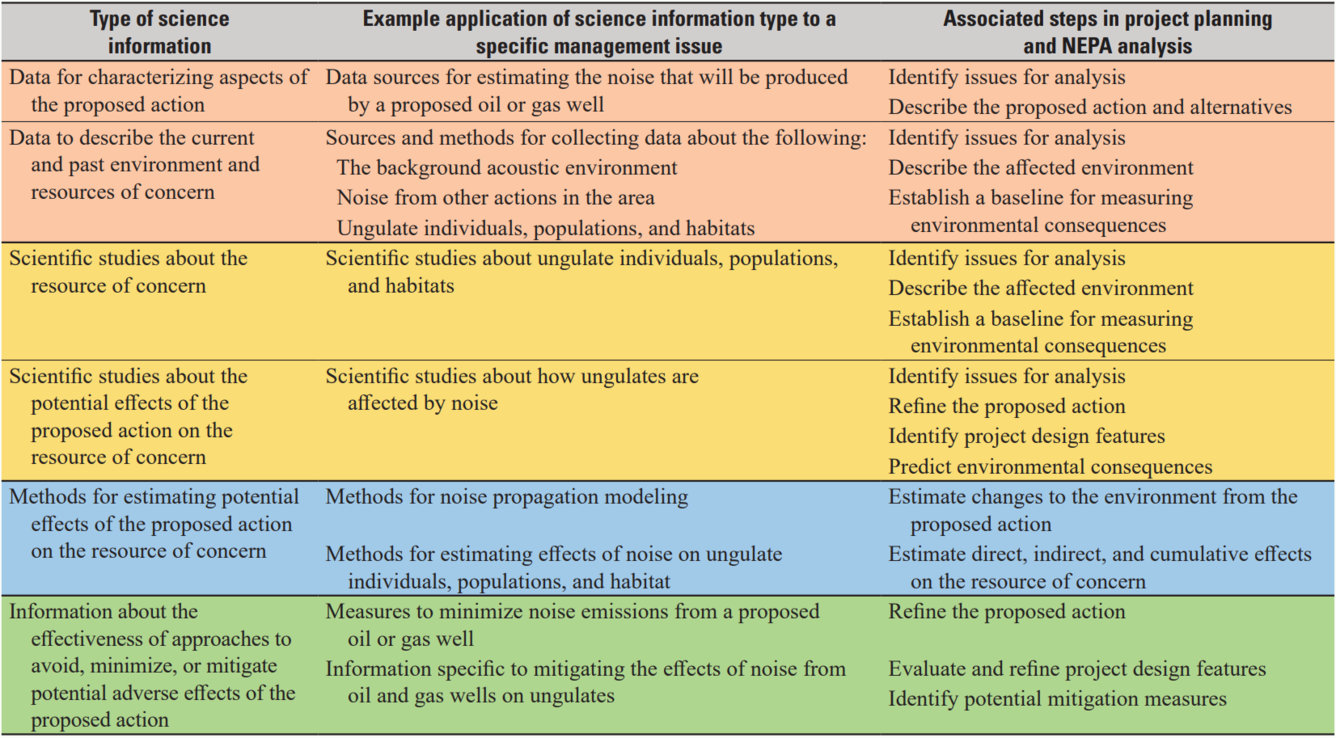Structured science syntheses to inform decision making on federal public lands
The USGS, Bureau of Land Management, and U.S. Fish and Wildlife Service partnered to develop a new type of science product: the structured science synthesis. Structured science syntheses are peer-reviewed reports that synthesize science information about a priority resource management issue on public lands, and are developed explicitly to facilitate the application of science to decision making.
Federal agencies manage over 600 million acres of public lands, often for diverse resource uses and values, including recreation, energy development, mining, conservation, and cultural preservation. Resource managers of Federal public lands are required by laws like the National Environmental Policy Act (NEPA) to analyze the potential effects of management actions on the environment and to use science information in their analyses. However, agency staff may not be aware of available science, may not have access to existing science, and may not have the time or background knowledge needed to find and synthesize all science on a topic.
A new type of science synthesis
The U.S. Geological Survey is working with the Bureau of Land Management and U.S. Fish and Wildlife Service to develop a series of science syntheses to support the use of science information in public lands decision making. In a recently published fact sheet, they describe this new type of science product: the structured science synthesis. Structured science syntheses are peer-reviewed, published reports that synthesize science information about a priority management issue on public lands. Key characteristics of structured science syntheses include that they are coproduced with resource managers, developed using clear, repeatable methods, and designed for ease of use. The syntheses include different types of science information needed for analyses completed under the National Environmental Policy Act.
Published structured science syntheses
Effects of noise from oil and gas development on ungulates and small mammals—A science synthesis to inform National Environmental Policy Act analyses: Oil and gas development is a common source of human-caused noise on public lands, and a growing body of research shows that human-caused noise can affect wildlife health and behavior. In this synthesis, we identify data and analysis methods related to noise emitted from oil and gas development on public lands. We then synthesize science about how industrial and traffic noise can affect ungulates and small mammals whose habitat is commonly intersected by oil and gas development.
Effects of culverts on habitat connectivity in streams—A science synthesis to inform National Environmental Policy Act analyses: Culverts are widely used to control water flow where roads and streams intersect. Culverts can alter stream flow and connectivity, potentially impacting habitat availability and movement of fish and other aquatic organisms. Public land managers are tasked with designing culverts in ways that minimize the potential negative environmental impacts from improper design or degradation over time. This synthesis is organized to support public lands decisions around culvert installation, modification, and removal. The synthesis focuses on methods that can be used to assess the effects of culverts on fish of the Intermountain West and resources for designing culverts that simulate natural stream conditions.
For more information
Please reach out to the project team if you're interested in submitting a topic for a new structured science synthesis, helping to develop a synthesis, or learning more about this new type of science product.
Or, check out the related projects below.
Structured Science Syntheses: Project Page
USGS Science Syntheses for Public Lands Management
Climate-informed Structured Science Syntheses
Get Our News
These items are in the RSS feed format (Really Simple Syndication) based on categories such as topics, locations, and more. You can install and RSS reader browser extension, software, or use a third-party service to receive immediate news updates depending on the feed that you have added. If you click the feed links below, they may look strange because they are simply XML code. An RSS reader can easily read this code and push out a notification to you when something new is posted to our site.





